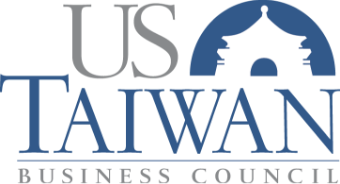Editorial:
Shore Up U.S.-Taiwan Relations Now as
Two-China Tensions have Abated
(Arlington, Virginia, October 6, 2010)
Joint Commentary by Rupert Hammond-Chambers and Walter Lohman – Investor’s Business Daily
China’s recent provocative behavior has created tension with many of its neighbors, from Southeast Asia and Japan to South Korea. But tension between China and Taiwan is at an all-time low.
The Obama administration seems to consider the calm an opportunity to focus on the more pressing foreign policy problems in East Asia, the Middle East and elsewhere. A lack of initiative from Washington has left U.S.-Taiwan relations essentially on autopilot. It’s a convenient response — but extremely shortsighted.
The key to long-term stability — across the Strait and throughout the Asia Pacific — is a strong, free, prosperous and democratic Taiwan able to hold its own in its dealings with China. This is possible only in the context of a healthy, action-oriented U.S.-Taiwan relationship. And this time of relatively peace and stability across the Strait is the perfect time to achieve it.
The Deal
Beijing and Taipei recently inked a historic Economic Cooperation Framework Agreement (ECFA). In signing the pact, Taiwan President Ma Ying-jeou’s stated goal was opening avenues for similar agreements with other trading partners.
His strategy appears to be bearing fruit. Singapore and Taiwan recently announced agreement to “explore the feasibility of an economic cooperation agreement.” The Philippines made a similar announcement. The devil is in the details of any such agreements and the way in which Chinese diplomatic interests are accommodated. Still, this is welcome news.
Meanwhile, the U.S. has failed to show leadership with a Taiwan Free Trade Agreement (FTA) of its own. Indeed, under the current administration, we have no overall trade policy. A U.S.-Taiwan trade pact would benefit both economies and anchor Taiwan more securely in the international economic order. Instead, we have let China jump ahead with ECFA, and now others may be poised to pass the U.S. as well.
The administration must articulate a long-term vision for the region that includes an integral role for Taiwan and support it with real action.
First, the U.S. must start leading on free trade by initiating a U.S.-Taiwan FTA. Provided that the U.S. and Korea do not turn their free trade agreement (KORUS) into a managed trade agreement, President Obama’s intention to move it forward with Korea is a good thing. However, KORUS makes a U.S.-Taiwan FTA all the more imperative, since KORUS would give South Korean companies an advantage over their Taiwanese competitors. It is good to see the administration resetting the Trade and Investment Framework Agreement (TIFA) talks with Taiwan. The U.S. and Taiwan have not met for TIFA talks in three years. That’s because the U.S. was using the talks as leverage on disputed issues, like Taiwan’s problems with American beef imports, rather than using them to find solutions. We shouldn’t let this sort of thinking cause the talks to lapse again. We can’t advance the economic relationship if we’re not talking.
Second, the U.S. should sell Taiwan the F-16C/D fighters it has requested and support the upgrade of its existing F-16A/Bs. Numerous reports from both government and private sources document the growing military imbalance across the Taiwan Strait. This sale is the single most important thing the U.S. can do to dent the imbalance in forces vis–à–vis China. It’s also an essential material demonstration of U.S. support for Taiwan at a time when the Ma administration may start to engage China on thornier matters.
Third, the U.S. and Taiwan should institutionalize an annual two-plus-two strategic dialogue between high-level State and Defense Department officials and their counterparts from Taiwan. Such a dialogue should accompany a return to the arms sales process that ended in 2001. This will limit the space for the sort of political games recently played with America’s security commitment to Taiwan and help ensure that important decisions on arms sales are made in a timely manner. While senior American officials today meet periodically with their Taiwan colleagues, the lack of transparency allows for rhetorical assurances of good faith by the U.S. unmet by material demonstrations of action.
Fourth, we should establish a broad mix of regular government visits between Taiwan and the U.S. It has been more than 10 years since a U.S. Cabinet officer visited Taiwan. The Obama administration has entertained the possibility of Secretary of Veteran Affairs Eric Shinseki visiting Taipei.
Other Suggestions
The energy and commerce secretaries or the U.S. trade representative should visit Taiwan. Cabinet-level contact should be backed by an end to the prohibition on American flag and general officer visits to Taipei, lifting the bar on Taiwan’s ministers of defense and foreign affairs visits to Washington, and letting Taiwan’s officials visit the State Department for consultations.
Now is the time to push for stronger relations with Taiwan. If we don’t, the U.S. may well wake up one day to find itself unable to influence events in the Taiwan Strait and, ultimately, in the broader Asia-Pacific region.
Hammond-Chambers is president of the US-Taiwan Business Council.
Lohman is director of the Heritage Foundation’s Asian Studies Center.
